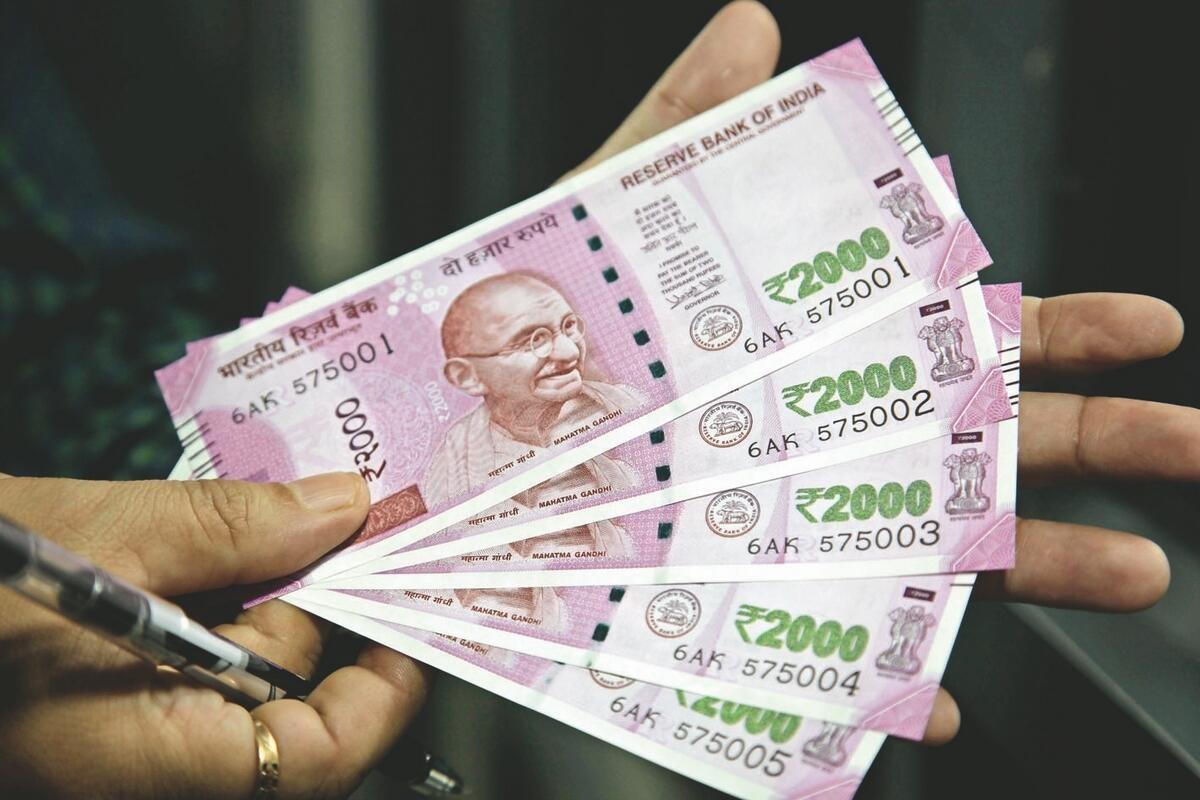Reply To:
Name - Reply Comment

 By Ashanthi Warunasuriya
By Ashanthi Warunasuriya
Designating the Indian Rupee (INR) as a foreign currency, on a request made by Sri Lanka, is a boost for Sri Lanka’s economy.
Sri Lanka’s Central Bank has added the Indian Rupee to the list of currencies that are permitted to be used for offshore banking.
The Monetary Board of the Central Bank of Sri Lanka had officially announced in August that the Indian Rupee has been designated by the Central Bank as the transaction currency for international transactions.
Exporters and importers in Sri Lanka can now carry out their foreign exchange operations using Indian rupees in official banks.
Exports and imports have been restricted due to the high demand for dollars, and lack of reserves in banks.
The Central Bank of Sri Lanka (CBSL) had requested the Reserve Bank of India’s (RBI) to classify the Indian rupee (INR) as a designated foreign currency in Sri Lanka.
Sri Lanka made this request from the RBI to facilitate and promote trade and tourism in the SAARC region including India.
After India approved Sri Lanka’s request to designate the INR as a foreign currency, Sri Lankans are now permitted to hold USD 10,000 worth of Indian rupees in physical form.
“In order to promote growth of global trade with emphasis on exports from India and to support the increasing interest of global trading community in INR, it has been decided to put in place an additional arrangement for invoicing, payment, and settlement of exports / imports in INR,” the RBI said in a notification.
While the Indian rupee cannot be used as legal tender by Sri Lankans under this move, it will give Sri Lanka, which is facing an acute dollar shortage, some liquidity support for imports. With 22 million people, it has struggled to supply its citizens with food, medicines, fuel, and other essentials for many months.
On the other hand, India’s decision also coincides with its efforts to popularize its currency among Asian nations and to reduce its reliance on the US dollar.
It introduced the rupee trade mechanism in July, some months after western countries blocked Russian banks from the SWIFT financial messaging system which facilitates cross-border payments. This new mechanism allowed the settlement of global trade in Indian rupees.
According to The Business Standard, this will provide Sri Lanka much needed liquidity support to help it tide over its economic crisis amid inadequate dollar liquidity.
To enable this, Sri Lankan banks must enter an agreement with an Indian bank to open INR nostro accounts — accounts that banks hold in a foreign currency in another bank.
Another significant development is that offshore banking units (OBU) of Sri Lankan banks have been permitted to accept savings, time and demand deposits from non-residents.
According to sources familiar with the development, all current account transactions including exports, imports, and remittances can be undertaken between Sri Lankan residents and non-residents. Transactions between Sri Lankan residents can only be done through banking channels and only for permitted activities, bankers said.
While this arrangement was approved by India a few months ago, the Central Bank of Sri Lanka was yet to notify the rupee as a designated foreign currency.
Sri Lanka has designated 15 foreign currencies, including the US Dollar, Pound Sterling, Renminbi, Kroner, and Swiss Franc. Last year, the Thai Baht was added to this list.
According to sources familiar with this situation, “Sri Lanka is facing dollar liquidity issues, but it has requirements on the import front. If Sri Lanka does not have dollar liquidity, it may take several months before it will be comfortable on that front. But trade cannot come to a standstill. With this, Sri Lanka can export textiles to India, for example, and get paid in rupees which can be used for imports from India.”
Besides, this move also eases norms for Sri Lankans planning to visit India, such as students, as balances of up to $5,000 worth of INR can be withdrawn as foreign travel allowance in cash. This means Lankans can convert their currency directly into INR.
To put this in context, before the Covid-19 pandemic, over 300,000 Sri Lankans on average visited India annually, accounting for about 3 per cent of the total foreign tourist arrivals.
The Indian government’s move comes months after it put in place an additional arrangement for invoicing, payment, and settlement of exports and imports in rupees, popularly known as INR Trade.
The currency swap has the potential to draw foreign investors who will be attracted by the stability of a substitute currency and show greater willingness to be paid in INR rather than the domestic currency LKR, which might be subject to losses on foreign exchange markets. Further, with a foreign currency, the economy is unlikely to face a balance of payments crisis when speculators take flight and sell domestic currency.
India continues to be supportive of Sri Lanka in "all possible ways" for its early economic recovery and growth, the Indian High Commission stated, and has assisted the crisis-hit country on top of the nearly USD 4 billion it has extended this year.
The Indian High Commission in Colombo announced that India’s total credit support to Sri Lanka this year, including currency swaps, amounts to nearly $4 billion. India provided a dedicated credit line for fuel imports amounting to $700 million which ran out in late June, leaving large fuel queues at Indian Oil Company fuel retail stations. The state fuel entity was only supplying fuel to emergency services then.
Meanwhile, New Delhi also plans to invest in Sri Lanka across sectors through both private and public firms and interconnect the Lankan economy with the Indian economy to boost the sagging fortunes of Sri Lanka.
The sectors that India is focusing to invest include renewable energy, hydrocarbons, ports and infrastructure, IT and hospitality, the Economic Times reported.
The Indian economy has been growing steadily and was 2 trillion in current US dollars in 2014. It stood at 10 th position in the global ranking of GDP published by the IMF. UK was at 5 th position with 3 trillion current dollars. France, Brazil, Italy, and Russia were at 6 th, 7 th, 8 th and 9 th positions respectively.
Because of the persistent, methodical, and well thought through efforts made by Indian Prime Minister Narendra Modi, the Indian economy overtook Russia, Italy, Brazil, and France, one by one. At the end of the FY21, the Indian economy stood at a respectable 3.2 trillion. And it has now surpassed UK to stand firmly at 5 th position. India’s growth story continues. Because of the well thought through policies of the Modi government, Indian economy is comfortably poised to cross 5 trillion dollars by 2026.
Indian youth aspire to fulfil their dreams in a country filled with opportunities. They want an enabling environment. They are ready to push the boundaries of innovation. India is on course to become a developed nation by 2047. The foundation laid by PM Modi is strong.